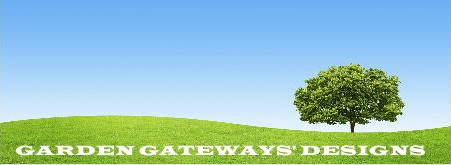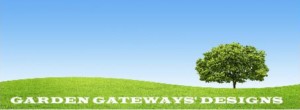
Presents
Theme Gardens
French Gardens Design Elements



French Gardens: Use typical French horticultural and garden accent selections. Place in appropriate formal, estate, natural, rural or city gardens.
The French early on adopted and elaborated on the Persian and Italian classical gardening methods easily identified as the four quadrant garden sections separated by walks, pathways and even roadways. As the French often had less dramatic changes in elevation, their tendency was to create a largely horizontal landscape on a very large scale. They also inserted their very identifiable French culture within this basic design style that made it their own. The junctures of the four quadrants displayed large fountains, statues, pavilions, gazebos or giant urns containing plants and flowers. The quadrants themselves were bordered by boxwood or other trimmed plant material and filled with flowers, herbs or colored crushed material to create very elaborate designs, often viewed from balconies or elevated terraces. All of these techniques are as desirable today as they were then. They just need to be scaled to the size of the garden being created. French fashion is also well demonstrated in the garden environment in the form of furniture, plant containers and a very large selection of garden art. The latticed decorated Versailles or Villandry boxes created for Louis XIV were used to create a forest of citrus trees for his gardens. The French also used large flower filled urns along long axial views to add dimension and perspective to that view. They enjoyed the use of large terraces, trellised arbors, decorative canals of water called moats and ponds with colorful fish. They also created “mirrored lakes” that reflected trees, shrubs and garden objects. Like the Italians they loved the grotto design and built them into their gardens. In French gardens large shaped trees and topiaries were favored and hedges were trimmed into a labyrinth which is an intricate structure of interconnecting passages through which it is difficult to find ones way, also called a maze. Espaliers, which are trained fruit trees and flowering and fruiting vines trained as a pattern on walls are very, very French. In addition to tree boxes, scrolled iron worked French plant stands; benches and chairs are other excellent accents. With so much to choose from, select the appropriate general garden style for the client and site that establishes one of the French garden perceptions. Choose garden accents that are comfortable to the French experience. You could select large stone sculptures that depict French royal figures or symbols often used in France such as gothic objects, Fleur-de-lis or heraldry icons. Make visits to antique stores that often carry very good French garden objects. Scour photographs and magazines of classical and modern day French gardens and dissect them to determine those elements that make the design what it is. Some favorite flowers in a French garden are roses, iris, violets, pinks, lily of the valley, primrose, columbine, bellflower, peonies, calendula and crocus.




If the landscape design professional is attempting to create an important “top of the mark” cultural garden where serious scrutiny by observers is expected, it is advisable to consult with an expert in that garden design specialization.
Photo Palette Offerings
(Obviously, only a small sampling of related garden elements can reasonably be displayed, but the viewer should be able to use these as a springboard to develop their own design palette.)
French Decorative Elements
French Garden Scenes
French Hardscape Elements
French Plants






































































